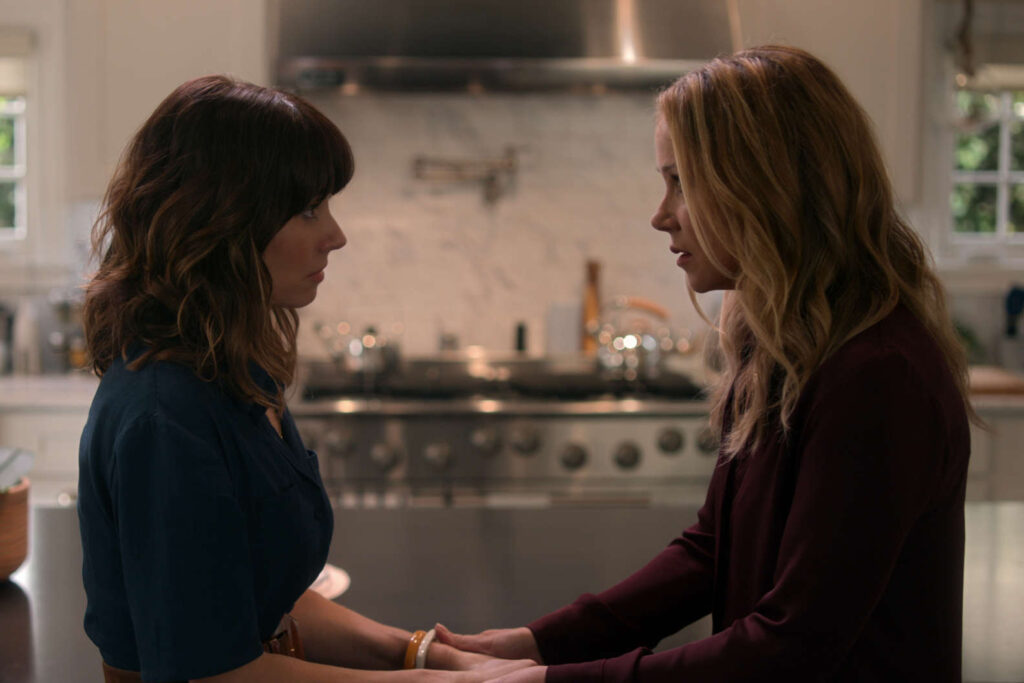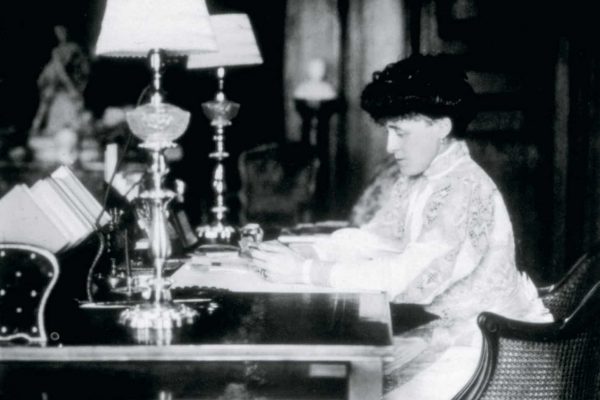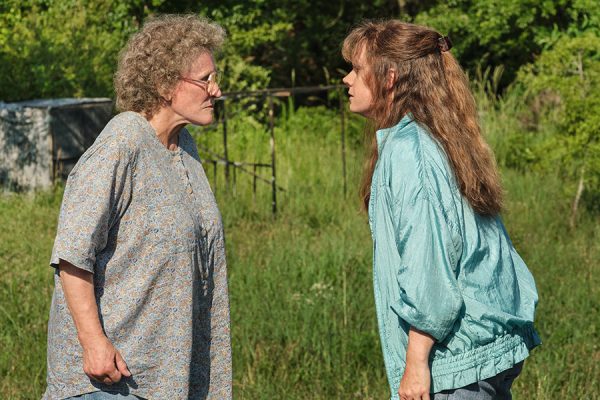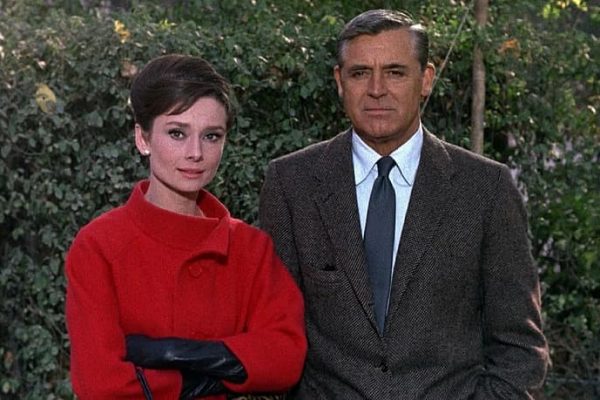After “the,” “and,” and “fuckin’,” the most frequently used word in the Netflix series Dead to Me must be “sorry.”
The protagonists of the show, Judy Hale and Jen Harding, have plenty for which to be sorry. First Judy (Linda Cardellini) kills Jen’s husband with her 1966 Mustang in a hit-and-run accident. Then Jen (Christina Applegate) bludgeons Judy’s ex-fiancé with a wooden bird and leaves him to bleed to death in her backyard pool.
Whereas in the criminal legal system the defendant does everything possible to deny guilt, in Dead to Me the mobilizing emotion is a longing to confess.
Their victims, it must be said, sort of had it coming. Ted Harding was a peach of a dad but a rotter of a husband: he rejected his wife after a double mastectomy and breast reconstruction and cheated on her with a waitress named Bambi, who is about as old as her namesake. Steve Wood, Judy’s fiancé (who survives until the end of the first season), has no redeeming qualities aside from bedroom-blue eyes and a big cock. He is, among other things, a liar, an egotist, an abuser, a Mafia collaborator, and a preposterous home decorator. He is also the reason Judy left the scene of the accident after hitting Jen’s husband.
Even if they didn’t off one another’s significant others, Jen and Judy have no reason, beyond the dicta of odd-couple comedy, to be friends. Jen, a real estate agent and loving but erratic mother of two boys, is cynical, short fused, and filthy mouthed—“an angry widow running around town like a white wine vigilante,” in the words of Detective Ana Perez (played with deadpan exasperation by Diana Maria Riva). Judy is a nursing home art teacher fond of pretty dresses and new age claptrap; she’s an emotional pushover, a hugger, and an over-sharer—“very leaky out [the] mouth,” as Jen describes her.
Temperamentally they’re opposites. Circumstantially they’re enemies. In short, they’re a bad bet for besties—or for any relationship.
Yet, like it or not, they develop one. Interpersonal violence is, after all, a relationship by definition. Nearly 90 percent of murder victims knew their assailant, and even when they don’t, killers send out tendrils of connection between themselves and their victim’s kin and friends. Crime statisticians call these survivors “co-victims,” who, alarmingly but not surprisingly, comprise as many as 15 percent of U.S. adults.
Jen and Judy are co-victims and perpetrators both—partners in mourning, in guilt, and, eventually, in crime. All of this brings them together and then prevents them from parting. “What kind of friendship is based on lies? And manslaughter?” Steve asks Judy when she informs him that Jen has become her best friend. Judy replies, “A layered one?”
These complications make Dead to Me a deft tarantella of tragedy and farce. But the series also does something else. Within a conventional killer-on-the-lam drama lies a critique of the criminal legal system and an alternative to it. Whereas in that system the defendant does everything possible to avoid apprehension and deny guilt, in Dead to Me the mobilizing emotion, the source of tension and comedy, is a longing to confess. While the denouement of crime fiction is the criminal’s arrest and the final satisfying clang of the prison gate, here retribution brings nothing but more trouble, and the story moves circuitously toward accountability and repair. Dead to Me is a parable—and a parody—of restorative justice.
• • •
In thrillers, slasher films, and Mafia movies, good and bad guys kill and get killed; the entertainment comes from the inventiveness of their demise. But in crime TV, characters tend to assume the roles that the adversarial legal system carves for them: they are perpetrators or victims, doers or done-to, guilty or innocent. Perpetrators may be viciously or genteelly psychopathic; they may be methodical as bankers in pursuit of the life insurance payout. Antiheroes kill for a just cause—Bonnie and Clyde for the little guy, Thelma and Louise for the sisterhood. They are bad in a good way, but they get their comeuppance anyhow. Meanwhile, victims are timid or vengeful, numb or aching, but nearly always innocent.
Restorative justice rejects these binaries, recognizing that everyone has been harmed and everyone does harm. This does not minimize the suffering a harmful act causes, but it does allow the harm-doer to be seen as human—that is, as fallible and redeemable.
A leitmotif of Dead to Me is an ongoing argument between Judy and Jen concerning which one of them is good and which is bad. In most instances they blame themselves and praise the other: “You’re a saint.” “I’m not a saint. You are an angel. You’ll come to find I’m the devil.”
Restorative justice allows the harm-doer to be seen as human—that is, as fallible and redeemable.
They’re both right. Jen and Judy are good people. Still, neither can claim innocence, and they become even more culpable as the series progresses. Having killed separately in the first season, in the second they collaborate in covering Steve’s death: drag his body from the pool, pack it in the garage freezer, remove it only when rats and the kids threaten to find it, and haul it to a state forest in the middle of the night. Their lies grow more baroque with each grisly step.
The morning after they bury Steve’s body in the woods, Judy and Jen face each other in a diner booth. “We have to stay focused on the positive,” Judy urges, doubtfully. “How the fuck can you be positive right now?” replies Jen. “We are not in Snow White. We are in fucking Scarface!” "Well, I've never seen that," says Judy, typically obtuse. "Neither have I,” murmurs Jen. “No girls have."
In fact, contrary to Jen’s take, the pair is in both Scarface and Snow White. These “good” girls have subverted not just the distinction between innocence and evil, but also the gendered expectations of crime: masculine aggression and feminine victimization.
Dead to Me belongs to what Ian Frazier, in an essay on Nabokov’s Lolita, calls the “atrocious-hilarious genre” of fiction. While illustrating the ways that a violent death traumatizes even those touched peripherally, the series sends up the snuff porn lurking in every police procedural. Pastor Wayne (Keong Sim), the facilitator of the Friends of Heaven grief circle where Jen and Judy meet, “shares” his own experience of loss: “My aunt fell down the stairs and cracked her head open and bled out while her five-year-old son watched. And I was the one that asked her to get me a soda from the basement. So I live with that,” he says buoyantly. “And that’s a little something about me!”
Later Judy debriefs Henry’s classmate, the lugubrious girl-next-door Shandy Adams (Adora Soleil Bricher, no doubt in homage to Wednesday Addams of The Addams Family), who discovered Ted’s body on her way to school. “His face was half on, half off. . . . like someone bit it, then chewed it, then spit it back into his head,” says Shandy, with blank-faced relish. “Then hit it with a car.” “Sounds very traumatizing,” Judy ventures. Replies Shandy, “It was awesome.”
Interspersed with this grand guignol shtick are flashbacks of the rain-splattered windshield splintering under the impact of Ted’s body, of Steve’s twisted face and powerful body encroaching on Jen, and Jen’s blind, murderous attack. These scenes are not funny.
From the first episode forward, Judy compounds felony with faux pas and a hunger to atone with a self-denigrating habit of contrition. She is sorry for lying and sorry for telling the truth; sorry for being unavailable to Jen and sorry for getting clingy. She apologizes to lovers, to God, to the supermarket cashier.
The ethos of restorative justice is a belief in redemption, reflected in the community’s forgiveness and reintegration.
On the verge of confessing what she did to Jen’s husband, she instead confesses to what she did not do: attacking a parked late-model Corvette with a golf club—actually Jen’s revenge against its lead-footed owner, the sort of driver whom she thinks killed her husband. At other times, Judy swerves from her own guilt to implicate others for theirs: “There’s something I’ve been wanting to tell you for a long time,” she tells Perez. After a suspenseful pause: “Steve Wood is a money launderer.”
As Judy drops clues and makes alliances with her own pursuers, Steve grows more panicked and less patient. “We had a plan,” he says, pressing Judy to shut up about the accident. “You had a plan,” she replies, “I wanted to tell the truth.” He pours on the smarm. “Judy, we can’t change the past. . . . You don’t want to cause any more pain.” Yes, the truth is painful and wickedly hard to confess, and confession cannot change the past. But it is the first step toward accountability and, for all involved, toward reclaiming life after irreversible loss.
Jen and Judy are not engaged in a facilitated restorative justice process, meaning that these steps do not run in an orderly fashion. Judy is trying to repair the harm she caused and make amends. But because Jen does not know Judy did the harm, a cavernous space opens for misunderstandings to rush into.
In the end it is Jen’s tormented self-blame that compels Judy to confess to her friend. “It’s my fault that he’s dead,” Jen cries. As the TV viewer already knows, Ted wasn’t out jogging when he died, as Judy has been led to believe; he had left the house after a brutal fight with Jen. “I killed him! I keep trying to find the person to blame. And I drove him away,” she cries. “I hit him. Fucking hit him!”
Judy, evenly: “I hit him.”
Jen: “No, I hit him.”
Judy: “NO. I hit him . . . . I have a ’66 Mustang.” The implicated car.
As Jen’s expression morphs from mental confusion to moral incomprehension, from hurt to fury, Judy blathers apologies. “I thought that if I could just somehow make it up to you, if I could help you somehow, if I could be your friend—” Jen turns icy. Judy begs, “Please forgive me, Jen. . . . Please tell me what I can do to make things right. Please tell me, I would do anything. Please tell me what I can do.”
Jen: “You can die.”
In restorative justice the harm-doer must take responsibility, but the person harmed is not required to forgive. Still, the ethos of restorative justice is a belief in redemption, reflected in the community’s forgiveness and reintegration. In Dead to Me forgiveness is represented by a collection of risible but wise religious figures—the center that holds while Jen and Judy loose anarchy upon Laguna Beach.
“Where there is hatred, let me so love, where there is injury, pardon. [For] it is in pardoning that we are pardoned,” prays Jen’s friend and business partner Christopher (Max Jenkins), an endearingly campy gay Christian, who also directs the Holy Harmonies children’s chorus-cum-jazz-dance troupe (“I believe in miracles, since you came along, you sacred thing!”).
At Henry’s baptism—with Christopher’s encouragement, the child replaces his lost father with the Father—Jen’s mother-in-law whispers to older brother Charlie that baptism gives you a “do-over” for original sin. “Then all you have to do is ask for forgiveness and you get a clean slate. Isn’t that nice?” Jen whispers into Charlie’s other ear: “She’s totally fucking lying to you.” (Meanwhile, Charlie is hooked on the videogame Wrath of Hades.”)
Accountability and forgiveness are earned through the sort of extended and complicated relationship through which Jen and Judy struggle.
At the same time that the baptism is under way, Judy, estranged an umpteenth time from Jen, attends the funeral of a beloved nursing home resident whom she’d befriended, Abe (Ed Asner!). The rabbi (Jen Korber, a butch dyke Jew playing a butch dyke Jew) interprets the Mourner’s Kaddish for Judy: “Even though we’ve lost someone we love, we still praise God. If we want God to forgive us, we have to forgive him.”
Pastor Wayne calls it the “F-word.” He ain’t kidding.
• • •
As the second season draws to a close (the third is still in production), confessions, accusations, misunderstandings, epiphanies, and reconciliations tumble over each other in a frantic round robin. While the women labor to exonerate each other, neither can conceive of justice without severe penalty for themselves. After trying to commit suicide by leaping in front of a car, Judy decides to turn herself in to Perez and ask for the electric chair, “if they still do that.” Jen is having the same thoughts. She leaves a letter professing her love for Judy and asking her to be the boys’ guardian. Then she finds Perez at home and leads her to Steve’s grave, which they do not find.
In the car, talk turns to the women’s mothers, both of whom died during the girls’ adolescences, Jen’s of breast cancer, Perez’s while defending her from the blows of her abusive stepfather.
Perez lists the reasons a jury might be sympathetic to Jen, then begins to detail the “standard procedure” of confession: go to the station, give a sworn statement. “But you’re going to go home,” she tells Jen. “And we are never going to talk about what we didn’t find out here ever again.”
Jen, weeping, doesn’t understand.
“It’s just—” the reticent Perez searches for words. “I don’t wanna be a cop right now. I wanna be a person.” She adds, “Sometimes justice just works itself out.”
The show rejects the binaries that the adversarial legal system carves out, recognizing that everyone has been harmed and everyone does harm.
But justice does not just work itself out. Justice is earned. Accountability and forgiveness are earned through the sort of extended and complicated relationship through which Jen and Judy struggle. The criminal legal system denies this very relationship, instead assigning attorneys, judges, and jailors as disinterested surrogates for the anguished perpetrator and victim of violence.
In the person of Perez, Dead to Me suggests that we might get closer to justice by dropping the roles, withdrawing from the bureaucratic morality play, and forgiving each other and ourselves for the sometimes literally fatal flaw of being human.








